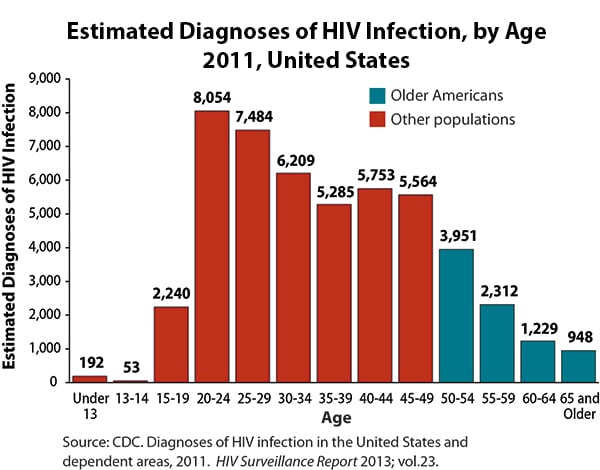Increasing secondary education protects against HIV infection
Longer secondary schooling substantially reduces the risk of contracting HIV, particularly for girls, according to new research from Botswana published in The Lancet Global Health journal. The researchers estimate that pupils who stayed in school for an extra year of secondary school had an 8 percentage point lower risk of HIV infection about a decade later, from about 25% to about 17% infected.
The study, which also shows expanding secondary schooling to be a very cost effective HIV prevention measure, used a recent school policy reform as a ‘natural experiment’ to determine the impact of increased years of secondary schooling on risk of HIV infection.
Implemented in 1996, the reform led to an average increase of 0.8 years of schooling among teenagers, by providing free grade 10 education as part of junior - rather than senior - secondary school. This policy presented a unique opportunity to estimate the causal effect of length of schooling on risk of HIV infection by comparing birth cohorts exposed to the reform versus those unexposed, using data from national HIV surveys collected in 2004 and 2008.
Although education is known to be closely associated with health, whether or not formal education actually protects against HIV infection has been hotly debated for over two decades. Research so far has produced conflicting results.
Jacob Bor, senior author and Assistant Professor of Global Health at Boston University School of Public Health, Boston, USA explains, “It is difficult to isolate the effect of education on HIV risk from the complex web of co-factors such as personal motivation, psychological traits, socioeconomic status, and family background. In the absence of large-scale trial data, natural experiments can provide robust evidence to guide policy.”[1]
Using data from two nationally representative household surveys, the Botswana AIDS Impact Surveys (2004 and 2008), the researchers used statistical techniques commonly used in economics and political science to analyse natural experiments. Botswana has one of the highest rates of HIV in the world, with around 22% of adults aged 15-49 years infected in 2013 [2]. The authors investigated the causal effect of an additional year of schooling on HIV status in 7018 men and women at least 18 years old at the time of the surveys. Individuals born in or after 1981 (who would have started junior secondary school in 1996 or later) were classified as exposed to the reform.
The researchers estimate that individuals who gained an extra year of secondary schooling due to the policy were 8 percentage points less likely to test positive for HIV about a decade later, when most of those exposed to the policy were in their mid 20s. The effects were particularly strong among women, with each additional year of secondary schooling reducing infection risk by 12 percentage points.
 According to co-author Jan-Walter de Neve, a doctoral student at Harvard T.H. Chan School of Public Health, Boston, USA, “Information about prevention methods and reasoning skills gained in school may play a preventative role against HIV, enabling people with education to adopt healthy strategies to avoid infection. Additionally, education may expand economic opportunities and reduce women’s participation in higher risk transactional sexual relationships. Secondary schooling may be particularly effective in reducing HIV risk by targeting a critical period of growth in adolescence.”[1]
According to co-author Jan-Walter de Neve, a doctoral student at Harvard T.H. Chan School of Public Health, Boston, USA, “Information about prevention methods and reasoning skills gained in school may play a preventative role against HIV, enabling people with education to adopt healthy strategies to avoid infection. Additionally, education may expand economic opportunities and reduce women’s participation in higher risk transactional sexual relationships. Secondary schooling may be particularly effective in reducing HIV risk by targeting a critical period of growth in adolescence.”[1]
The findings also show that increasing secondary schooling has the potential to be a very cost-effective as an HIV prevention intervention in endemic countries. Professor Bor adds, “This study is among the first to provide causal evidence that secondary education is an important causal determinant of HIV infection. Our results suggest that schooling should be considered alongside other proven interventions as part of a multi-pronged ‘combination’ HIV prevention strategy. Expanding the opportunities of young people through secondary schooling will not only have economic benefits but will also yield health benefits and should be a key priority for countries with generalised HIV epidemics.”[1]
Writing in a linked Comment, Dr Karen Ann Grépin from Robert F Wagner’s Graduate School of Public Service, New York University, New York, USA says “[The] results were strongest among women…which is especially important given the worldwide inequities in access to secondary schooling for girls, especially in Africa… increasing access to education in low-income countries should be an important priority because of the proven economic returns to such investments. The health returns from education, such as its potential role in HIV and child mortality should also make it a top priority for the global health community.”
###
NOTES TO EDITORS:
This study was funded by the Takemi Program in International Health at the Harvard T.H. Chan School of Public Health, Belgian American Educational Foundation, and Fernand Lazard Foundation.
[1] Quotes direct from author and cannot be found in text of Article.
[2] Botswana HIV prevalence rates for 2013 used in the study are from http://www.unaids.org/en/regionscountries/countries/botswana
###
Professor Jacob Bor
jbor@bu.edu
617-429-6910
The Lancet